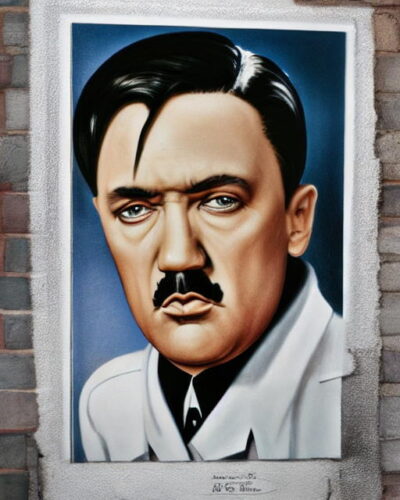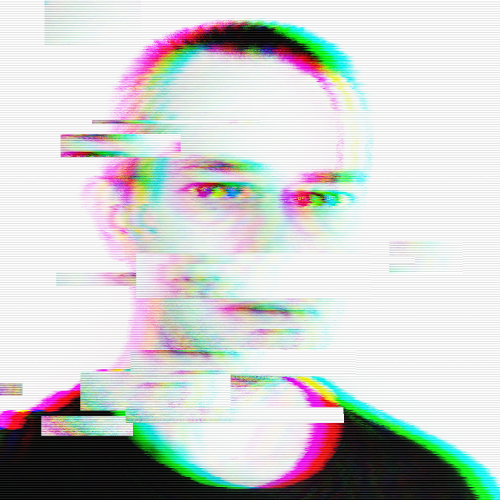I recently found on a hard drive all my research papers from way back in graduate school. I decided that instead of letting them collect more digital dust, I could publish them here. They could be of interest to someone. Probably not an academic interest, they’re all about 20 years old, and more recent things must have been written on the various topics they talk about. But to someone else? Who knows? (if you’re a lazy student, do not even think of plagiarizing them, first, that’s just plain wrong, but also, as I mentioned, they’re a bit too old, especially the secondary sources – you could use them as inspiration? Quote me in that case, please… and link back here if you publish anything online doing so).
This specific paper is dear to my heart, despite the fact that it’s not that good. It’s actually my very first graduate research paper. It was the Fall semester of 1998. I was just starting my Master’s, and I had arrived in the US just a few months before. I had no idea what a research paper even was (back in France as an undergraduate student, we were still handwriting dialectical essays, basically and not much of anything else). So, yeah, it’s not that good.
I edited it quite a bit. Rereading it for the first time in more than 20 years, I was really surprised by my English. My grammar was actually pretty good, there were very few mistakes. It’s true that back then, having just gotten my Bachelor’s in English, my written English was pretty good, it was my speaking skills that were lacking. However, on the stylistic side of things… Let’s say that the paper was difficult to read. I was writing in a French academic style, except in the English language: long convoluted sentences that made you sound very smart in French, but that made you almost illegible in English. So I edited most of those (I left a few untouched, can you tell which ones?) I didn’t change anything about the content, though – that would have required me to redo the paper, basically.
It’s about Don DeLillo‘s novel White Noise, a novel that’s very important in my life (I explain a little bit why in this Substack post), and as the movie adaptation will drop on Netflix any day now (on December 2nd, I believe), I thought that now would be a great moment to revisit it.
So here is my first research paper for your enjoyment:

Hitler & Elvis, same stuff: Simulacrum in Don DeLillo’s White Noise
Don De Lillo’s White Noise tells the story of Jack Gladney, a college professor in a fictitious American college during the early eighties. He is the chairman of the college’s Hitler Studies, a field he invented. As the novel’s narrator, he shares with the reader various episodes of his everyday life, as well as his feelings and reflections about his fear of death, a thing that he’s obsessed about.
The novel is somewhat plotless in appearance. However, one can argue that the plot is not the point of this novel. White Noise is definitely a post-modern novel, and it is this dimension that will be studied in the present text. In the first part, we will discuss that Jack can be seen as a modern character in a postmodern world. We will also see that, through his narration, he is caught in a simulacrum. Finally, in the last part, we will talk about how Hitler can be seen in the novel as a postmodernist symbol of late twentieth-century Western Civilization.
First of all, it is necessary to make a distinction between Jack, the main character of the novel, and Jack, its narrator. This novel presents our world as a world of simulacra, a world “constructed in representations which are (…) lived as real” (Frow). Signs become reality. Reality is only seen as a simulation, not the way it actually is. “The world we inhabit is one in which identity is simulated in the play of difference and repetition (…) denying the priority of an original over the copy, of a model over the image” (Deleuze). One striking example is the SIMUVAC, which considers the Airborne Toxic Event as “a chance to use the real event in order to rehearse the simulation.” Moreover, an event has any worth only if it is reported in the media. The event itself has no meaning, only the fact that it is talked about has meaning and importance. This is exemplified in the aftermath of the Airborne Toxic Event. The people who just lived through it experience sadness and disappointment. However, these feelings are not experienced as a consequence of the traumatic event, but because no one talked about it in the media (p161-162), which cheapens its importance in the eyes of the people who lived through it.

However, Jack remains somewhat oblivious to that. “In modernist fashion, [Jack] struggles in an almost Sisyphean way to glean meaning from the surrounding noise of culture” (Wilcox). Jack is a sort of modern hero in the fact that he is looking for meaning and a reason for everything in life. He acts and thinks as if he was unaware of all the symbols and signs surrounding him.
Two examples chosen by Wilcox illustrate this. When Jack goes shopping with his family (Ch. 17, p84) he feels like he is doing something important, his actions have a deeper meaning beyond the mere act of consumption. He says that he “traded money for goods”. His use of the verb “trade” directly refers to ancient times when the economy was based on bartering. Trading implies that the two things that are being traded have a given usage and that their value lies in the use people will make of them. Money has no other usage than being “traded” but in his search for meaning, Jack assigns one to everything, even to things that don’t really have an intrinsic one. Money has no meaning in itself, it only gets one by social convention. It is a proxy for value and meaning. That is not enough for Jack.
In another example, (Ch 21, p155), Steffie speaks in her sleep but all she says is random car brand names. At first, Jack only sees “a ritual meaning, part of a verbal spell or ecstatic chant.” Even when he realizes what she actually says, he keeps on being amazed and he still sees “the name of an ancient power in the sky.” He just cannot take things as they are. Once again, he feels that he must find an explanation for everything, even what does not need to be explained.
The problem is that he fails to see the postmodern dimension of the world. This is especially highlighted when he is with his friend and colleague, Murray, who is without a doubt a postmodern character. For example, when they go see “the most photographed barn in America”, Murray is aware that they’re “not here to capture an image, [they’re] here to maintain one”. Strangely, at that moment, Jack doesn’t look for any meaning. He doesn’t even speak. And his conclusion of the chapter is “He seemed immensely pleased by this.” At that moment, Murray seems to have opened Jack’s eyes to the simulacrum of life. But he is not ready to accept it yet. He doesn’t know what to answer. He just remains speechless, possibly even disturbed by this revelation.
After all, a lot of Jack’s life revolves around his fear of death. And how can death be a simulacrum? How can it be devoid of meaning? Death is the last vestige of the real. However, according to Wilcox, it becomes part of the precession of simulacrum. And yet, Jack only realizes that his own death is as real as anyone else’s when he sees “a data profile of his condition”. In other words, he only becomes aware of the reality of his own future death when he sees a simulation of it on a screen.

Another striking thing is that while Jack the man has a hard time dealing with the simulacrum of the world, Jack the teacher seems to be able to perceive it. After all, the difference between teaching a class and performing on a stage is not that big. When he teaches, Jack invents another self. He wears sunglasses and he changes his name to J.A.K. In order to appear more credible, he becomes a representation of himself. To the point that the two Jacks become almost two distinct figures and that he “can’t teach Hitler without [the sunglasses].” (p221) The sunglasses and the pseudonym become an inherent part of the Hitler studies.
The most striking and ironic thing is that while, as a character, Jack doesn’t fully realize in what kind of world he lives, as a narrator, his descriptions of this world are clearly postmodern. His perception of reality is completely distorted by simulacra. For example, when he drives through Iron City, he describes the buildings he sees and concludes with this statement: “How close this was to a classic photography of regret.” All of his descriptions are influenced by TV or cinema. “The cloud resembled a national promotion for death, a multimillion-dollar campaign.” When he watches his children sleeping, he has the “feeling [he]’d wandered into a TV moment”. When talking about Attila’s death: “I want to believe, he lay in his tent, wrapped in animal skins, as in some internationally financed movie epic.”
At times, his whole narration and storytelling are shaped by the influence of images. In chapter 38, when he gets a gun, he is surprised that the gun is gun-shaped and the bullets are bullet-shaped (p297). For him, weapons belong to the world of fiction and so he can only perceive their reality through the fictitious image he has of them. Once Jack carries the gun, he begins to see the world like it is in ‘gun movies’. This even affects his narration, (p298). His descriptions, once somewhat realistic, become a kind of parody of gangster movies.
As we saw, Jack as a character is looking for meaning in this apparently meaningless world. But, as a narrator, he contributes to creating this meaningless world where everything is based on images and signs. For example, whenever he talks about food, he never really describes the food itself, only its packaging. He finds it stupefying that Murray only buys generic food (Ch 5, p18), as for him, packaging has more importance than what it contains. In other words, packaging (i.e. the representation) defines the product and makes it real and meaningful.
Narration is shaped by the TV world in another aspect. At different points in the novel, the storytelling is interrupted without any apparent reason by various brand names. They act exactly as commercials interrupting a movie or a show on television. The next stage would be real advertising inside novels, interrupting the narration (Has it ever been done? The author of these lines would rather not know.) As, when watching TV, it is impossible to watch a show without it being interrupted by commercials, it is fair to wonder at what point commercials become a part of the show too. Seeing how he handles them in his novel, DeLillo made his choice. They definitely are a part of it.
Jack is also the chairman of Hitler Studies. At first, this choice for a field of study can be surprising and may raise eyebrows. This is a postmodern choice. Jack is not interested in Nazism. Definitely not from an ideological perspective, but not even from a historical one. The very idea of Hitler Studies was thought of and conceived as a marketed product. And “[the chancellor] was quick to see the possibilities. It was an immediate and electrifying success.” (p4).
“Like a good businessman, Gladney comes up with the idea of Hitler Studies as a clever gimmick at a specific moment in time.” (Cantor p44)
Hitler is not perceived for who he was or what he did, but for what he represents nowadays in mass media and popular culture. He is chosen as a field of study because of the fascination he exerts with Americans in the late 20th Century. They are fascinated by him, probably because he was the closest to what we imagine to be incarnated evil. But also because he is not abstract and distant like tyrants of ancient times can be. A character like Nero or Ghengis Khan can only be ‘realistically’ represented through an “internationally financed movie”. On the other hand, there is a clear and somewhat accurate representation of Hitler in most people’s minds. And at the same time, there is a certain distance between him and the American psyche. The American civilian population didn’t suffer as most European populations did. It doesn’t carry that trauma. Not after the war, and even less in the decades that followed.
Also, if we put aside for a few lines all the horrors perpetrated by Nazism, we can say that it was a postmodern ideology, starting with its imitation of the Roman Empire. Nothing was great or noble in Nazism, all was a simulacrum of greatness and nobility. In a way, it was “more the product of Leni Riefenstahl than the heroic deeds of Nietzchean Übermenschen.” (Cantor) The Nazis were obsessed with representations. Hitler is a disturbingly fascinating figure also because he left miles of film that we cannot help but watch in an almost metatextual way. We are not so much interested in the content or the meaning of those films as we are in the films themselves – in the fact that they exist. It is hard to take one’s eyes away from a film featuring Hitler; not just the ones where he’s acting at the Führer but even more so his more ‘personal’ films where we see him in the company of his lover, his friends, dogs… There’s an uncanny dimension to these films. They are simple family vacation films, except for the fact that they’re starring one of the most infamous historical figures in history. It probably is the reason why there are so many things about him on American TV – at some point, the History Channel was nicknamed the Hitler Channel, almost as an echo to Jack Gladney’s Hitler Studies. This shows “how, in postmodern culture, an authentic horror can become attenuated in representations of it in the media and the Academy.” (Cantor)
It’s been said that history always repeats itself. But Marx completed the sentence by adding that it did “the first time as tragedy, the second time as farce.” Murray proved Marx right when he decided to start a department of Elvis Studies that is heavily inspired by Jack’s Hitler Studies. Beyond the purely farcical dimension of Murray’s career choice, we can argue that Hitler and Elvis are comparable from a postmodern perspective. The two of them exert a fascination upon many people. However, it is the representation of the two men in popular culture that is fascinating, much more than their actual selves. Of course, to put these two historical characters on the same academic level, despite the huge discrepancy between their actual lives and the extremely different impacts they had on the world, has a comical effect in the novel. It also underlines how the popularity and importance of cultural icons in the late 20th century are divorced from their meaning, and from the reality of their existence. They have become products of consumption, just like everything else. Their value solely depends on the representations that are made of them, just like everything else.
It has been mentioned before that only death really resists simulacrum (to a certain extent). And interestingly, both Hitler and Elvis escaped death; not in the real world, but thanks to simulacrum. Stories of Hitler managing to flee Berlin when the allied forces arrived and spending the rest of his life as a shoemaker somewhere in Europe or South America come to mind. Similar stories circulate about Elvis, probably working in a 7-Eleven somewhere in the Midwest. These modern urban legends are quite interesting in their similarities. They are a sign that Hitler and Elvis have escaped reality. Only their representations remain…
To conclude, it can be said that White Noise depicts a world totally transformed by the representations that populate it. That’s why it can be said that the novel is realistic. It shows a reality that is constantly being distorted by simulacra. We can discuss simulacrum but we can’t avoid it. Our education and perception of the world are shaped by it.
And now that we, as members of this society, are more and more aware of that phenomenon, what will happen? Are we going to enter the age of post-postmodernism? Heinrich, Jack’s son, could be its prophet. Will we become like him? Doubting any and every aspect of reality because their representations do not match it at all anymore?

Note from 2022: Rereading these last lines more than 20 years later is a bit scary, as yes, the Western world seems to become “post-postmodern.” Unhealthy skepticism has reached dangerous heights in many parts of society where facts and opinions have become indistinguishable from each other with the consequences we’re already seeing, be it the threats to democracy, the anti-science movement, and similar worrisome things at the worst possible time.
Bibliography
- DeLillo, Don. White Noise. London: Picador, 1986.
- Cantor, Paul A. “Adolf, We Hardly Knew You” New essays on White Noise Cambridge University Press (1991) 39-62.
- Frow, John. “The Last Things Before the Last: Notes on White Noise.” The South Atlantic Quarterly 89:2 (1990) 413-427.
- Marx, Karl. The Eighteenth Brumaire of Louis Bonaparte. 1852.
- Wilcox, Leonard. “Baudrillard, DeLillo’s White Noise, and the End of Heroic Narrative.” Contemporary Literature 32:3 346-365.
Discover more from liminal web
Subscribe to get the latest posts sent to your email.
